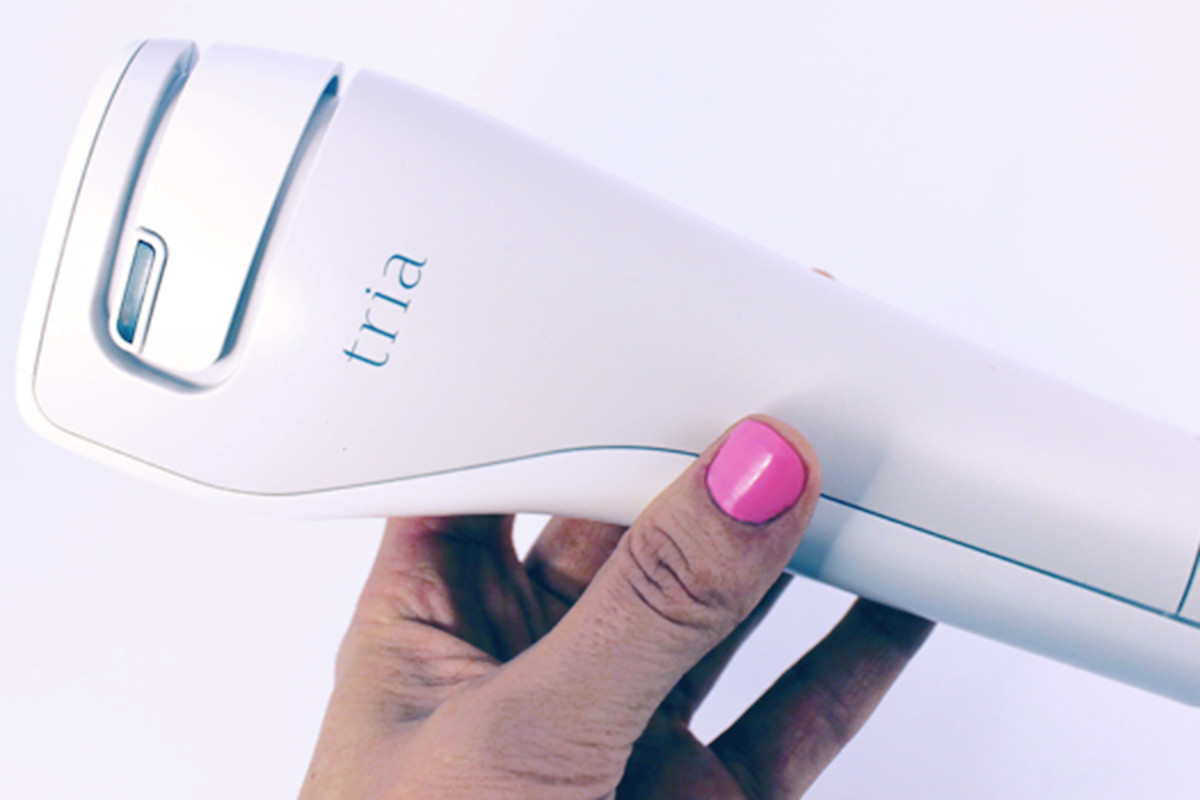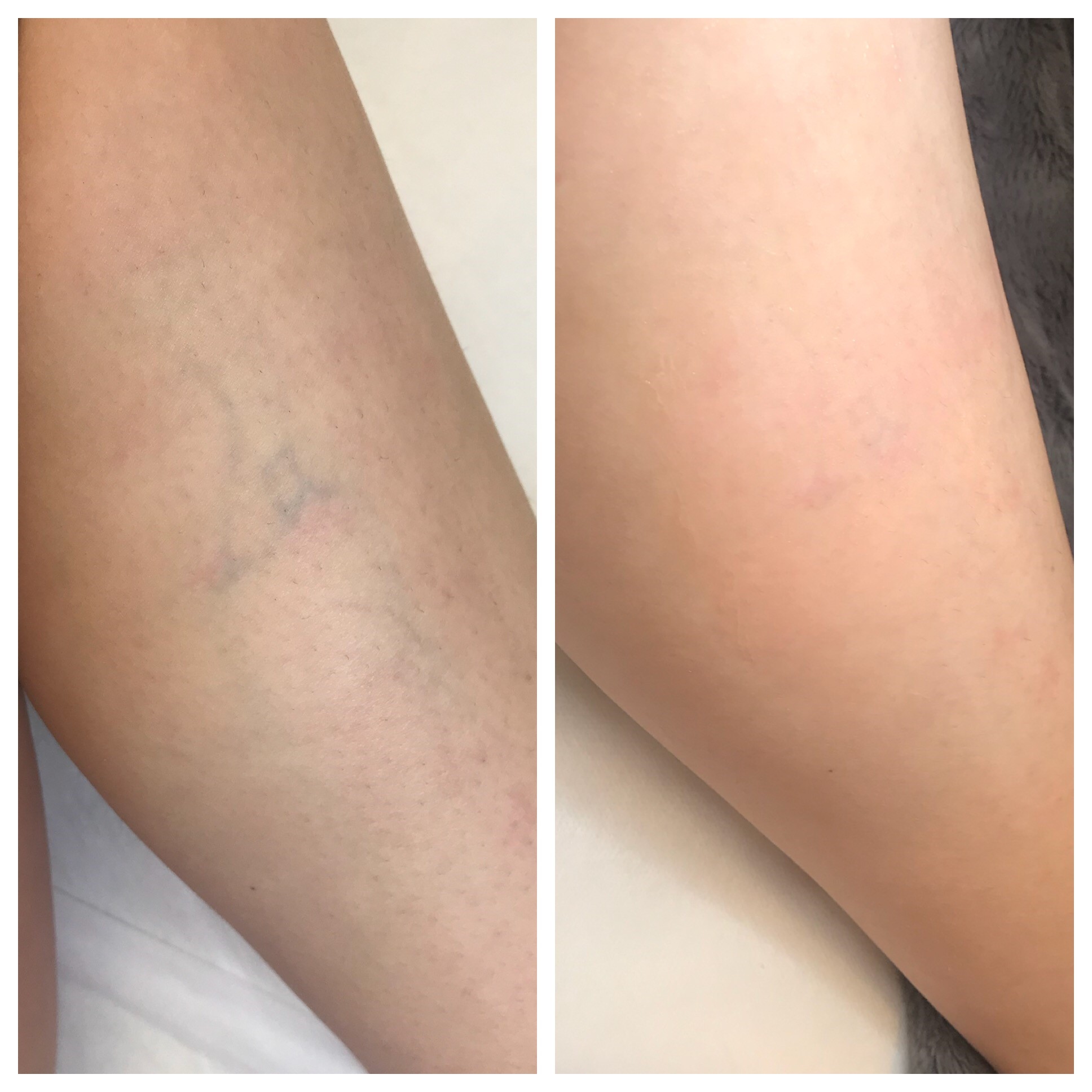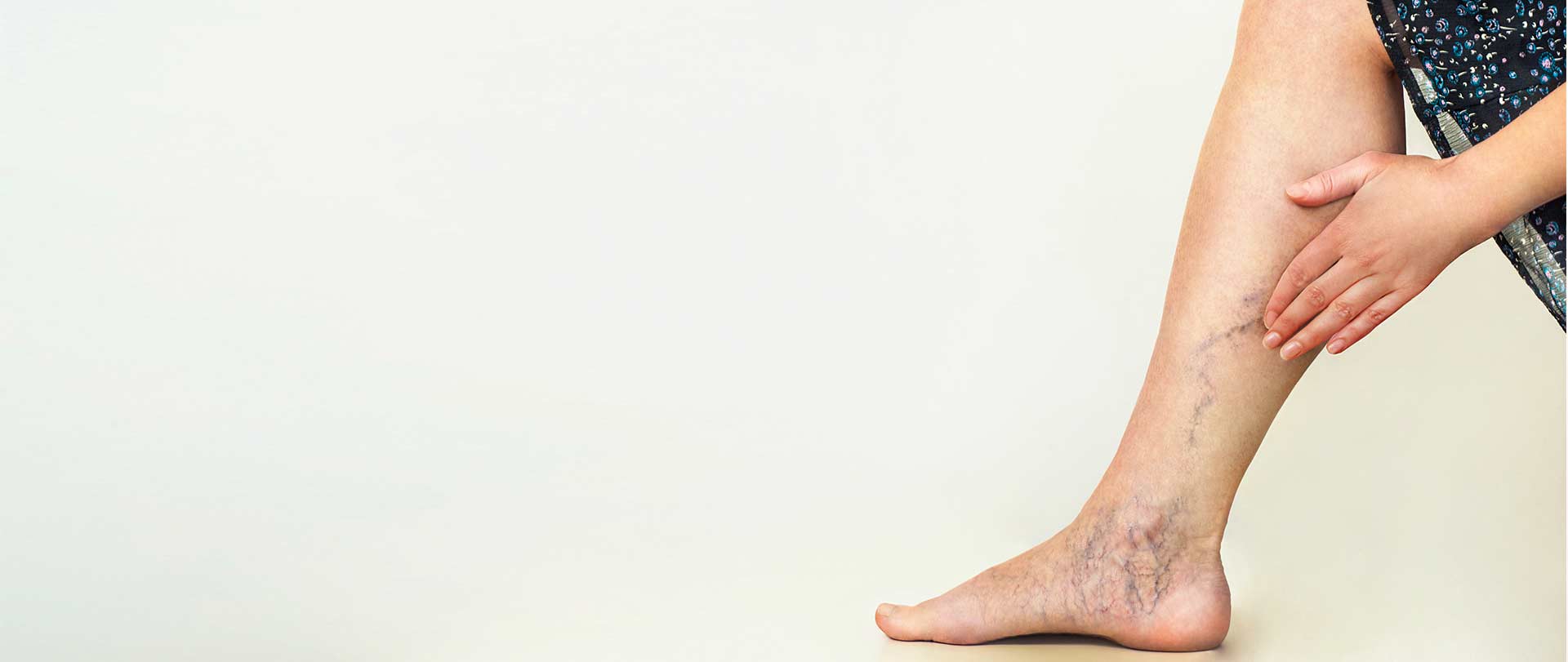Many people, perhaps like you, really wish for skin that looks smooth and clear, especially when those small, web-like veins start to show up. It's a very common thing, and finding a good way to deal with them can feel a bit tricky, you know? A lot of folks are looking for simple, easy methods to get rid of these little lines without a big fuss.
The Tria laser, a device for home use, has actually caught a lot of attention in the beauty world. It promises to help with different skin concerns, and people often wonder if it's the right choice for something like spider veins. It's interesting, too, that the name "TRIA" can sometimes cause a little mix-up, as it also stands for the Terrorism Risk Insurance Act, which is a big deal in the insurance world after the 9/11 attacks, requiring insurers to offer terrorism coverage and involving things like data collection and state regulators, as you might know. But here, we're talking about the beauty device, not the insurance act, so that's something to keep clear.
This article will talk all about using the Tria laser for those small, visible veins. We'll look at how it might work, what you can expect, and if it's really a good option for you. We will, in a way, help you figure out if this at-home tool could be a helpful part of your beauty routine, or if it's just a little bit off the mark for what you need.
Table of Contents
- Understanding Spider Veins
- How the Tria Laser Works for Skin
- Can the Tria Laser Help with Spider Veins?
- Who Might Benefit from This Treatment?
- Using the Tria Laser for Veins Safely
- Potential Side Effects and What to Watch For
- At-Home vs. Professional Treatments
- Frequently Asked Questions About Tria Laser and Spider Veins
Understanding Spider Veins
Spider veins are those tiny, thin lines that show up on your skin. They can be red, blue, or purple, and they often look like a spiderweb or tree branches. You might find them on your legs or face, too.
These little veins are actually very small blood vessels that have gotten bigger. They are usually not a health problem, but many people just don't like how they look. So, it's pretty much a cosmetic thing.
Things like getting older, spending a lot of time standing, or even just your family history can make you more likely to get them. Pregnancy and hormonal changes can also play a part, you know, in some respects.
They are different from varicose veins, which are much larger and often bulge out. Spider veins are flat, or very nearly flat, on the skin's surface, so that's a key difference.
How the Tria Laser Works for Skin
The Tria laser devices, like the ones for hair removal or skin rejuvenation, use a type of light energy. This light is very focused, and it aims at specific things in your skin. It's kind of like a tiny, very precise flashlight.
When this light hits your skin, it turns into heat. This heat then affects the target, whether it's hair follicles or certain parts of your skin cells. It's a pretty smart way to work, honestly.
These devices are made for home use, so they are generally less powerful than the big machines you find in a doctor's office. This makes them safer for you to use on your own, too, which is a big plus for many.
They are designed to be easy to handle and follow safety guidelines. This means you can use them without needing a lot of special training, just by reading the instructions, you know.
The Science Behind the Light
Lasers, generally speaking, work by sending out a single wavelength of light. This light is absorbed by something called a chromophore. In skin, common chromophores are melanin (for hair and dark spots) and hemoglobin (for blood vessels).
When the light hits the chromophore, it creates heat. This heat then causes a controlled injury to the target. For hair, it damages the follicle; for skin, it can stimulate new collagen, you know, for a smoother look.
The trick is to use a wavelength that only targets the specific thing you want to change, leaving the surrounding skin alone. This is what makes lasers so precise, it's actually pretty clever.
Different lasers use different wavelengths for different jobs. So, a laser meant for hair removal might not be the same as one for skin texture, or one for veins, in a way.
Is It Different for Veins?
When it comes to veins, the target chromophore is hemoglobin, which is in your blood. Lasers that treat veins aim for this hemoglobin. When the laser light is absorbed, the blood inside the vein heats up.
This heat makes the vein wall collapse and seal shut. Once the vein is closed, your body naturally takes it away over time. This is how many professional laser vein treatments work, too.
However, the Tria laser, typically, is designed for hair removal or general skin rejuvenation. These devices often use wavelengths that are best absorbed by melanin, not necessarily hemoglobin. So, that's a key point to consider.
This means that while a Tria laser might affect some very, very superficial veins, it's not its main purpose. It's not specifically calibrated to target the hemoglobin in spider veins as effectively as dedicated vein lasers, you know.
Can the Tria Laser Help with Spider Veins?
Many people wonder if their Tria laser, which they might use for hair, could also zap away those pesky spider veins. The short answer is, it's not really designed for that job. It's kind of like using a screwdriver when you really need a hammer, in some respects.
While some people might report a tiny bit of change on very, very small and light veins, it's not what the device is made to do. The results are often very limited, or even non-existent, for most spider veins, apparently.
The technology inside the Tria laser is optimized for different targets in the skin. It's usually for hair pigment or stimulating collagen, not for the blood inside tiny vessels, you know.
So, if your main goal is to get rid of spider veins, a Tria laser is probably not the best tool for you. You might just be disappointed with the outcome, so it's good to know that upfront.
What to Expect from At-Home Use
If you do try using a Tria laser on spider veins, you should keep your expectations very low. You might see no change at all, or perhaps a very slight fading of the absolute lightest veins. That's about it, really.
It's not going to make a noticeable difference for most spider veins, especially those that are a bit darker or larger. They are simply not strong enough or precise enough for that kind of work, you know.
You also need to be very careful about how you use it. Using a device for something it's not intended for can sometimes lead to skin irritation or other issues. So, safety is always first, by the way.
Always follow the instructions for the device's intended use. Trying to make it do something else can be risky, and you might not get any good results anyway, which is kind of a double problem.
Limitations and Realistic Outcomes
The main limitation of using a Tria laser for spider veins is its wavelength and energy output. It's just not set up to effectively target the hemoglobin in the blood vessels, you see.
Professional lasers for veins, on the other hand, use specific wavelengths that are highly absorbed by blood. They also have much more power, which allows them to effectively close off the veins. That's a huge difference, obviously.
Another limit is the depth of penetration. Spider veins can be at different depths in the skin. An at-home device might not reach deep enough to affect all of them, especially the slightly deeper ones, you know.
So, a realistic outcome is that the Tria laser is not a solution for spider veins. It's better to look into treatments that are actually designed for that specific problem, which makes sense, right?
Who Might Benefit from This Treatment?
Since the Tria laser isn't really for spider veins, it's important to talk about what it *is* good for. People who benefit from Tria devices are typically those looking for at-home hair reduction or general skin tone improvement. That's their main job, you know.
If you have unwanted body hair and want a convenient way to reduce it over time, a Tria hair removal laser could be for you. It's pretty popular for that purpose, actually.
For skin rejuvenation, some Tria devices aim to help with fine lines, wrinkles, and overall skin texture. They work by encouraging collagen production, giving your skin a bit of a fresher look, so that's a benefit.
So, if you're thinking about a Tria laser, make sure it matches the skin concern you actually have. It's not a magic wand for everything, unfortunately, but it does have its specific uses, you know.
Using the Tria Laser for Veins Safely
Even though the Tria laser isn't meant for spider veins, if you were to use it, safety is always the most important thing. You need to protect your skin and eyes above all else, obviously.
Always read the user manual that comes with your specific Tria device. Every model can have slightly different instructions and warnings. It's really, really important to follow them, you know.
Never use the device on broken skin, open wounds, or areas with active skin conditions. This can cause irritation or make things worse, so just don't do it.
Protect your eyes by not looking directly into the laser light. Some devices might come with protective eyewear, and if they do, use it every single time, as a matter of fact.
Getting Ready for Your Session
Before you even turn the device on, make sure your skin is clean and dry. Any lotions, oils, or makeup can interfere with the laser's effectiveness and potentially cause issues, too.
Shave the area if you are using a hair removal Tria laser. This allows the light to focus on the hair follicle under the skin, not on the surface hair, which is important for it to work right.
Do a patch test first on a small, hidden area of your skin. This helps you see how your skin reacts before you treat a larger spot. It's a very good safety step, you know.
Wait at least 24 to 48 hours after the patch test to check for any bad reactions. If everything looks fine, then you can move on to a larger area, you know, more or less.
Step-by-Step Application
Turn on your Tria device and select the intensity level. Start with the lowest setting and gradually increase it if your skin handles it well. Don't just jump to the highest setting, basically.
Place the treatment window firmly against your skin. The device needs good contact to deliver the light effectively. If it's not touching right, it might not work, or it might flash incorrectly.
Move the device slowly across the skin, making sure to overlap slightly with each pulse. You want to cover the area evenly without missing spots or treating the same spot too many times, you know.
Follow the recommended treatment pattern and duration from the manual. Don't overdo it, thinking more is better. It's usually not, and it could actually cause problems, you know.
Aftercare Tips for Your Skin
After your session, your skin might feel a little warm or look slightly red. This is often normal. You can apply a cool compress to help soothe it, if you like.
Keep your skin moisturized with a gentle, fragrance-free lotion. Hydrated skin tends to heal better and feel more comfortable, too.
Avoid direct sun exposure on the treated area for a few days. Always use a good sunscreen, SPF 30 or higher, when you go outside. Sun exposure can cause dark spots or other issues after laser use, so that's pretty vital.
Don't pick at your skin or use harsh exfoliants right after treatment. Let your skin recover naturally. Give it some time, you know.
Potential Side Effects and What to Watch For
Even with careful use, any at-home laser device can have some side effects. Most are mild and temporary, but it's good to be aware of them, you know.
You might experience temporary redness, swelling, or a feeling of warmth in the treated area. This usually goes away within a few hours or a day, more or less.
Some people might notice temporary changes in skin pigment, either lighter or darker spots. This is more common in people with darker skin tones, so that's something to watch for, you know.
Blistering or scabbing can happen, though it's less common with at-home devices due to their lower power. If you see this, stop using the device and contact a doctor, seriously.
Pain or discomfort during treatment is also possible. If it's too painful, stop and adjust the settings, or consider if the treatment is right for you, basically.
If you experience any severe or lasting side effects, or if you're worried about anything, it's always best to talk to a skin care professional or a doctor. They can give you the right advice, you know.
At-Home vs. Professional Treatments
When it comes to treating skin concerns, there's a big difference between using an at-home device and getting a professional treatment. It's kind of like comparing a home repair kit to a professional contractor, you know.
Professional laser treatments for spider veins, like Nd:YAG lasers or IPL (Intense Pulsed Light), are much more powerful and precise. They are operated by trained experts who know exactly how to use them safely and effectively, you know, for instance.
These professional machines can target veins at different depths and sizes, giving much better and more consistent results. They are specifically designed for vein removal, so that's a key point.
At-home devices, like the Tria, are designed for safety and ease of use by consumers. This means they are less powerful and have fewer settings. They are good for maintenance or very mild issues, but not usually for significant problems, you know.
For spider veins, especially if they are numerous, dark, or on sensitive areas, professional treatment is almost always the more effective option. You will probably see much better results, honestly.
While at-home devices offer convenience and can save money upfront, the results might not be what you hope for, especially for something like spider veins. It's a trade-off, you know.
It's a good idea to talk to a dermatologist or a vein specialist to understand all your options. They can help you decide what's best for your specific situation and skin type, too. You can learn more about skin care solutions on our main page, and link to this page for more beauty tips.
Frequently Asked Questions About Tria Laser and Spider Veins
People often have questions about using at-home lasers for their skin. Here are some common ones, you know, that might pop up.
Is the Tria laser good for spider veins?
Generally speaking, no, the Tria laser is not really designed or effective for treating spider veins. Its technology is better suited for things like hair removal or overall skin rejuvenation, so it's not the right tool for those specific veins, you know.
What laser removes spider veins at home?
There aren't many truly effective at-home laser devices specifically for removing spider veins. Most at-home devices lack the power and specific wavelength needed to properly target and close off blood vessels. Professional treatments are usually needed for good results, you know, pretty much.
How long does it take for spider veins to disappear with laser?
With professional laser treatments, it can take several weeks to a few months for spider veins to fade and disappear. This depends on the size and number of veins, and often requires multiple sessions. At-home devices, as we've talked about, are not likely to make them disappear at all, so that's a big difference.
For more information on general laser safety and home devices, you can check out resources from reputable health organizations, like the American Academy of Dermatology Association, for instance.



